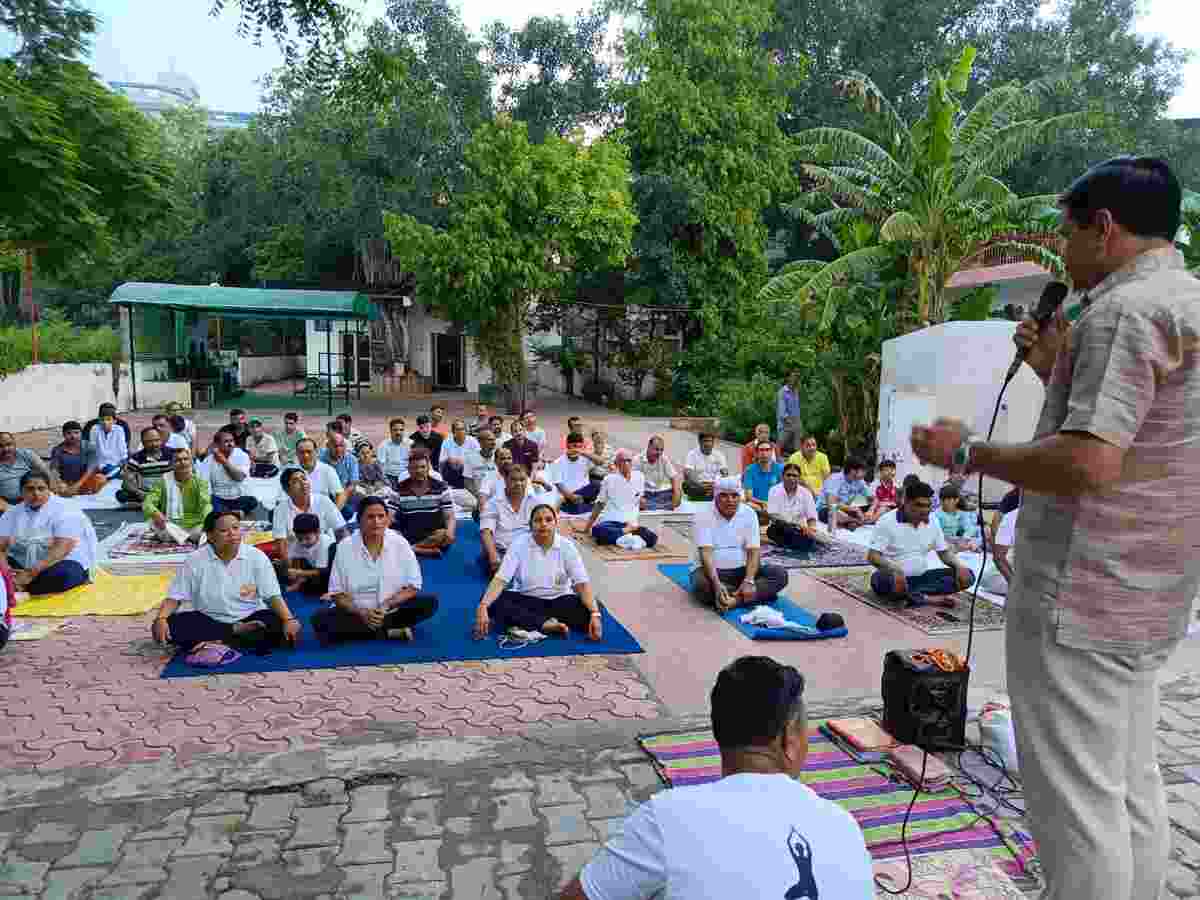Meditation – Do Not Think But See

Human Beings alone have the capacity to define god. All other beings, such as animals, birds, snakes, insects, plants, and minerals, do not. We have been granted this ability by divine grace. We can discuss and define god as well as experience him directly. Ultimately, it is not the knowledge of god that transforms, but the experience through meditation.
Tools of meditation – Mantras, Yantras, and Mandals that can be utilized to achieve all aims in human life, whether dharma, artha, kama and moksha, righteousness, material fulfilment, emotional fulfilment or liberation.
Mantra, Yantra, and Mandala For Meditation
Mantra means sound. The form of devi or shakti is not composed of flesh, blood, bones and merrows but mantra, yantra and mandala. Everyone is composed of sound, but that transcendental sound has been reduced to its grossest form in the physical body known as the mandal a three-dimensional object. The geometrical designs within which devi resides is known as ‘Yantra’ or Yantrik swaroopa.
Purification of oneself
The first requirement of sadhana is shuddhi; purification. Asana and Pranayam purify body. And the practices of antar mouna, ajapa japa, yog nidra, and kriya yoga to purify the mind. These methods effectively purify the sthool sharira (gross body) and the sukshama sharira (subtle body). But how one can purify the Karan sharira (causal body), where nothing can reach.
Purification at this level is most important if one wants to advance in meditation. Nada, or transcendental sound, is the only force that can penetrate this deepest layer of one’s being. The karan sharira immediately responds to Nada in the form of mantra, the transcendental sounds of amazing frequencies which are the storehouse of Shakti. Matras are not the name of god, they are sound energy in seed forms. The practice of mantras is a means to clean up and rearrange the entire psyche at the casual level.
Also Read: Meditation Benefits: 7 Awesome Benefits You Did Not Know
Mechanics of Yantra
Mantra and Yantra are totally inseparable. Every mantra has a corresponding yantra which is utilized for focusing the consciousness when it is released from the matter of the body through the practice of mantra. A Yantra comprises geometrical shapes such as a line, square, triangle, and point or bindu. The Bindu, or nucleus, is always the focal point of a yantra. Bindu is the point at which a spandan or vibration produces Nada (music), kala (waves), and light particles. This Universe is the consequence of the interaction of sound and light. Science also says the same. In French schools, Yantras have been utilized to improve the memory, performance, and intelligence of children from the age of 6 to 12.
Visualization
It is not thinking but seeing. Thought and visualization are two entirely different processes. The first i.e. thought depends entirely on the mind and the second i.e. visualization begins only when the mind is transcended. As long as the mind is active, one can think but not visualize. Visualization begins when the mind slows down and the thoughts begin to cease. Visualization is a highly creative process.
A person who is able to visualize clearly will definitely have a superior level of perception, which is very useful for developing the inner experience in its entirety. Thoughts are dissipated energy. which prevents one from seeing within. The process of seeing involves roop (form), and thus the concept of Mandal, which is essentially form, is the most prominent feature of meditation, purification, is a prerequisite in all the systems of meditation. Meditation is not just a vision, but an experience that touches the depths of one being.
Mechanics of Mandala (Three-dimensional shape or body)
Our body is also a mandala, the mandalas of devi. These Mandals or three-dimensional images of devi are important tools of meditation because they are the closest replica of living creatures that one can identify with.
Every Mantra has a mandala. As the mantra gains frequency through repetition, it manifests in the form of a mandala. The mantra may also manifest as Yantra, the linear and geometrical representation, but Yantra is abstract, not solid like matter.
Sadhak is concerned with developing the inner awareness to the stage of dharna, total concentration, so that dhyana or meditation, can happen. For that mandal is most useful because it acts on the subconscious and unconscious mind in such a way that it brings about transcendence.
Dhyan (Meditation) is visualization on yantra or mandala with mantra. Meditation is not thinking, but seeing or visualization. So be careful during meditation..
Also Read: Meditation: A Guide For The Beginners